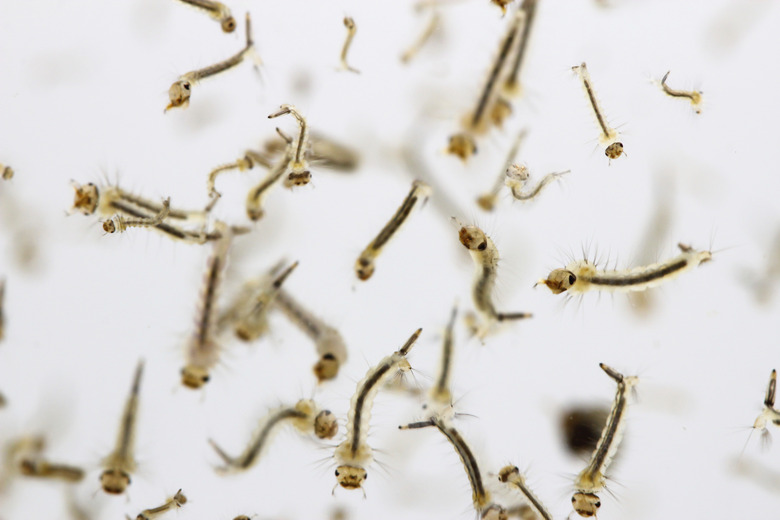Types Of Biopesticides
Biopesticides are pesticides derived from materials found in nature. The active ingredients are minerals, microbes and extracts or components of plants or animals. In 2014, the U.S. Environmental Protection Agency registered more than 430 active biopesticide ingredients in more than 1,320 products. Overall, biopesticides tend to be less hazardous for the environment than chemical or synthetic pesticides.
Biochemical Pesticides
Biochemical Pesticides
Biochemical pesticides are natural compounds that inhibit the growth, feeding, development or mating of insect pests or other disease-causing organisms. For example, insect pheromones disrupt the mating behavior of insect pests. An insect growth regulator, extracted from neem tree seeds, azadirachtin, interferes with feeding and molting of about 200 species of insects, and an extract of the Mexican tea plant (Dyspania ambrosioides) controls sucking insects that attack vegetables, fruit and nut trees.
Bacterial Biopesticides
Bacterial Biopesticides
Bacterial biopesticides must infect insects or their larvae to kill them. They are usually ingested and then parasitize their host. Bacillus thuringiensis, or Bt, is one of the most widely used bacterial biopesticides. The bacterium kills insect larva by producing a toxin that binds to the larval stomach cells. Different subspecies of Bt target specific insect larvae. Another example of a bacterial biopesticide is Agrobacterium radiobacter Strain K84, which is a soil bacterium that controls crown gall disease.
Fungal Biopesticides
Fungal Biopesticides
Fungal biopesticides don't have to be ingested to inhibit or kill their target pests — physical contact is sufficient. Fungal biopesticides usually consist of fungal spores and are easy to apply with spray equipment. Beauveria bassiana is a soil fungus that can control a wide range of pests, killing them within a few days. Fungi in the genus Trichodermais control plant diseases by parasitizing harmful fungi in the root zone of plants and enhancing plant growth and resistance.
Plant-Incorporated-Protectants
Plant-Incorporated-Protectants
Biopesticides also derive from genetic material that has been incorporated into plants. Such plants manufacture the biopesticide for protection from specific pests. An example of this is the incorporation of the Bt pesticidal gene into plants. In this case, the biopesticide is the protein derived from the Bt pesticidal gene — not the whole Bt bacterium.
Effeciveness of Biopesticides
Effeciveness of Biopesticides
Biopesticides are generally safe and only target a narrow range of pests and diseases, while chemical pesticides tend to kill a wide spectrum of organisms, both harmful and beneficial. To be effective, biopesticides often have to be applied at the right stage of the insect lifecycle or the plant's disease stage. To boost the insecticidal activity and make biopesticides more cost effective, scientists may sometimes modify a biopesticide organism, as exemplified by the incorporation of a specific insect-specific neurotoxin gene into fungi.
